— 7 min read
Subcontractor’s Guide to the AIA G703 Continuation Sheet
Last Updated Feb 23, 2024
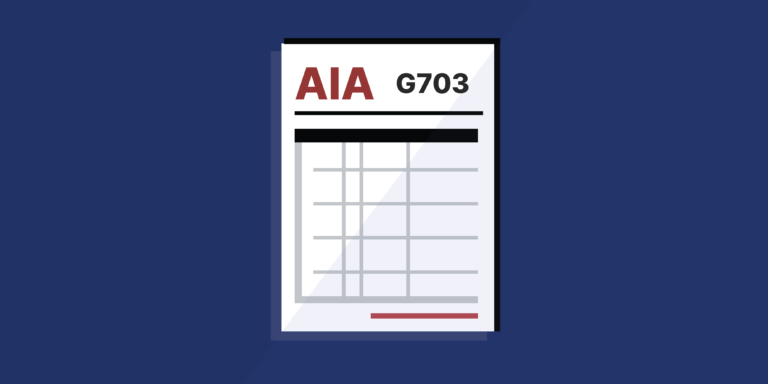
If working on a project using the American Institute of Architects (AIA) payment applications, the GC will likely require you to provide a continuation sheet, known as the AIA G703-1992 Continuation Sheet. In this article, we'll explain each section of the AIA G703 Continuation Sheet.
Contents
Table of contents
What is a construction continuation sheet?
A continuation sheet is a form that supplements a construction pay application. It provides additional information to make it easier for the property owner, general contractor, or lender to review the pay app quickly. This document provides the status of completed work, the costs associated with each part, and the current amount of payments made and to be made. All of this information will be based on the initial schedule of values provided at the outset of the project.
AIA's standardized contract documents
The American Institute of Architects (AIA) is a professional organization of architects and other construction industry professionals. The AIA is mainly focused on education and advocacy for better practices in the construction industry. One main service that the institute provides is the standard AIA Contract Documents that they offer.
These AIA documents are some of the most commonly used contracts in the construction industry. They cover all types of delivery methods and additional contract documents that may be needed on a construction project, and work with one another to set up the "AIA progress billing process." They are drafted to be legal, fair, and flexible for all parties.
The three most common documents will typically be used in conjunction with one another as part of the pay application process. These include the AIA G701-2017 Change Order, the AIA G702 Application and Certificate for Payment, and the AIA G703 Continuation Sheet.
The AIA G703 Continuation Sheet explained
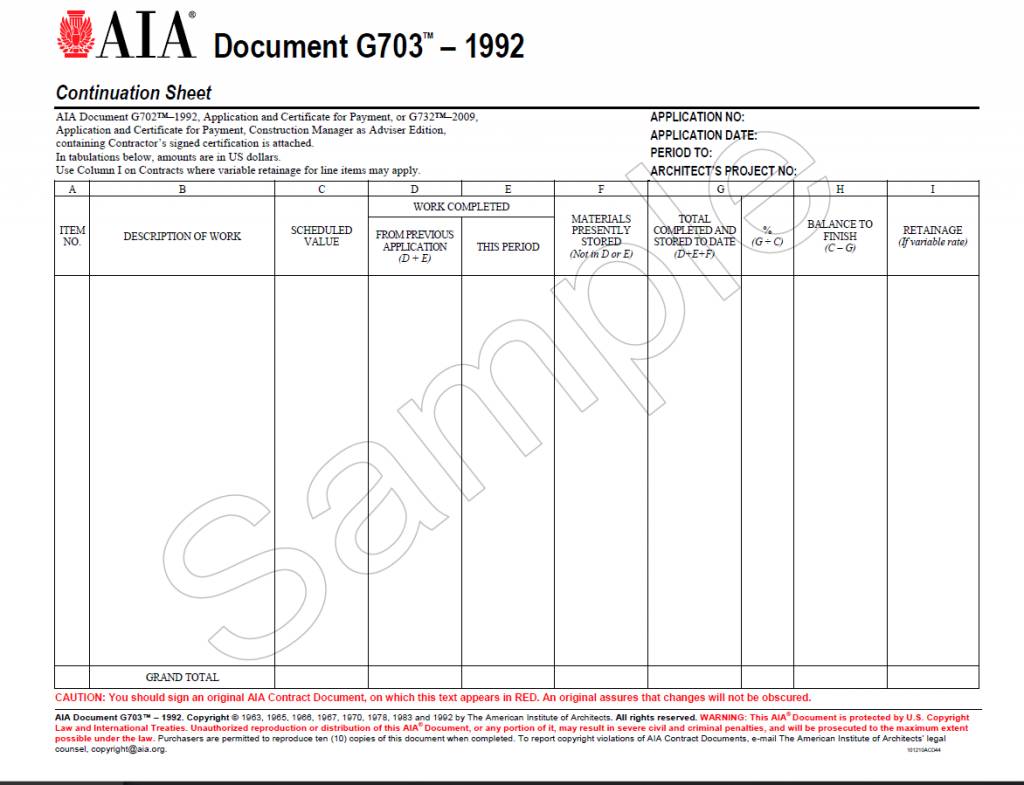
The AIA G703 Continuation Sheet is the more complex of the three main pay application forms. It's important to fill these forms out as accurately as possible, as they build on one another throughout the project. Let's dive into each section of this document.
AIA G703 Part I: Application information
The header section asks for some basic application and project information. There's not too much required here. You'll need to reference your AIA G702 pay app for the application number, date, and billing period. All that's left for this section is the project number.
AIA G703 Part II: Table of work and values
This section is where you will list each work line item, along with the associated cost or value, and accounting of work and materials. The more accurate your continuation sheet is, the easier it will be to fill out your pay applications. For each column except A and B, once each line item has been filled out, add up the amounts and put the total in the "Grand Total" row. If you have multiple pages, just put the totals on the last page.
Column A: Item number
The first column on the AIA G703 is the item number. This can simply be a numbered section such as 1, 2, 3, etc. However, some contractors in the industry opt to use the MasterFormat numbers set forth by the Construction Specifications Institute (CSI). This is a standardized index of work items or materials to make it easier to identify and classify line item work. For example, "Tunneling, Boring and Jacking" is #02400 in the MasterFormat system.
Column B: Description of Work
For each line item, you should provide a brief description of the type of work being provided. Just enough information to describe the labor performed and the materials that are being used. On a larger project, you may require multiple pages to include all of the relevant information.
Column C: Scheduled Value
The scheduled value is the amount of money it will take to complete each item. The amounts in this column should match up with the schedule of values from the beginning of the project. For the most part, these numbers will remain consistent throughout the project. Unless, of course, they are adjusted through change orders. Add the values should to get the subtotal at the bottom of the column.
If using multiple pages, just put the subtotal amount on the last page; you don't need to put a subtotal on each page.
Column D: Work Completed From Previous Application
This includes all of the work previously performed and completed before the current pay application. To get this amount, you will add columns D and E from the previous continuation sheet. If this is the first payment application, leave this column blank. The amount in Column D should just include the value of work performed. Don't include any previous payments, retainage, or any stored materials on site.
Column E: Work Completed This Period
Here's an easy one, this section simply requires the value of the work performed during the current pay period. Again, don't include any payments, retainage, or materials stored on site.
Column F: Materials Presently Stored
In column F, the value of all the materials that are currently stored on-site is provided. This includes materials and supplies relevant to the line item work that you already purchased but haven't used them on the project yet. Only enter the value of materials purchased up until the end of the current application billing period.
Column G: Total Completed and Stored to Date
In this column, you'll add up columns D, E, and F. This gives you the total value of the work completed through the pay period, along with the value of the materials you are storing. That value will be in the left-hand part of the column for each line item.
Column G: %
Once that cost for each line item, the right-hand part of column G is for the percentage complete. To get this number, take the value in column G (total completed and stored to date) and divide it by column C (scheduled value). This will give you the percentage of completion for each line item.
Column H: Balance to Finish
This column will tell you how much money you'll need to finish the work in each line item. This is another easy section. Just take the amount from column C (scheduled value) and subtract column G (total completed and stored to date).
Column I: Retainage
This column is for retainage — but only if you are using a variable retainage rate. This can mean one of two things: 1. That the amount of retainage is reduced after a certain percentage of work is complete, or 2. the retainage applies only to labor and not materials. If the retainage is fixed at a certain percentage throughout the entire project, you don't need to use this column.
How much does the AIA G703 cost?
The AIA provides two different ways to purchase an AIA G703 Continuation Sheet form.
1. AIA G703 – One-time use editable legal document
Cost: $39.99
- You'll have 365 days after the purchase date to edit or finalize the document
- You can edit the document online or offline (using Microsoft® Word or Excel).
2. 1-year subscription with unlimited access
Cost: $1,599.99 per user
The subscription includes:
- Unlimited use of all 242 documents (excluding state agency documents)
- Editable legal language
- Online/offline editing options
- Custom document templates
- Variance checker
- Frequently used clause library
- Share and track changes for review
- Unlimited document access and finalizations
- E-signature
Categories:
Tags:
Written by
Alex Benarroche
25 articles
Alex Benarroche serves as Associate Counsel for Procore. His legal expertise includes construction, contracts, business, and intellectual property. Alex is bilingual in English and Spanish. He earned a J.D. from Loyola University College of Law and an M.S. in Intellectual Property and Internet Law from the University of Alicante in Spain. Originally from South Florida, Alex has called New Orleans home since 2003.
View profileExplore more helpful resources
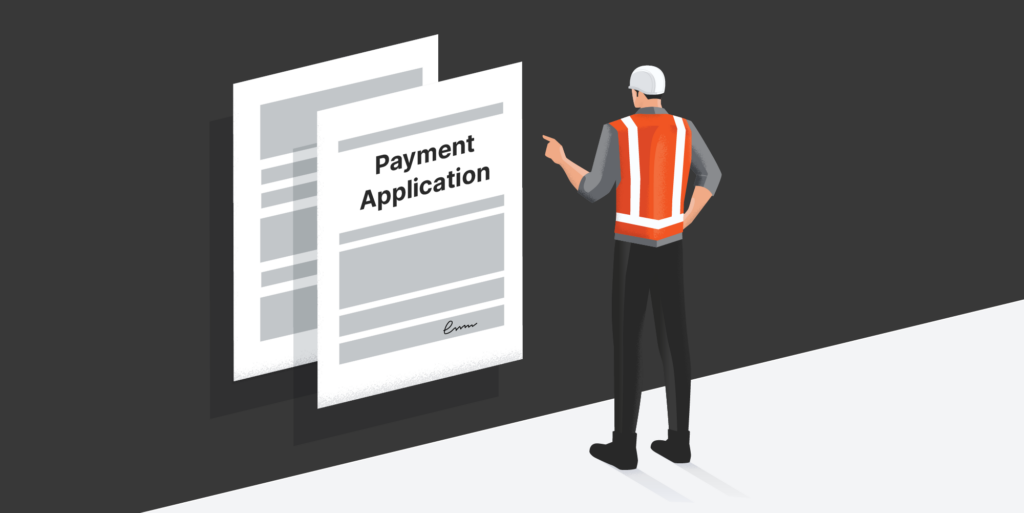
Construction Payment Applications: A Guide for Contractors
For general contractors, getting paid requires much more than just an invoice. Before any checks are sent, contractors are asked to prove what has been completed, delivered, and more with...

Construction Escrow: What Contractors & Suppliers Need to Know
Every construction project starts with funding — and some projects are funded through construction escrow accounts. These accounts are often opened by the lending institution to help with the distribution...
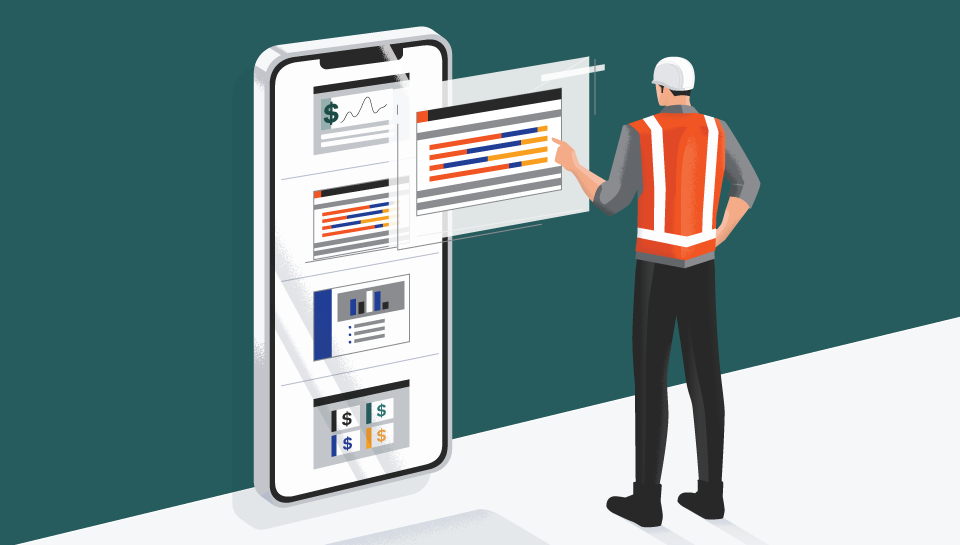
Contractor Payment Schedules: Why They’re Important & Choosing the Best Schedule for Each Project
In construction, a payment schedule is a timeline of the payments to be made throughout the lifetime of a project. On most jobs, contractors don’t receive a single, lump-sum payment...
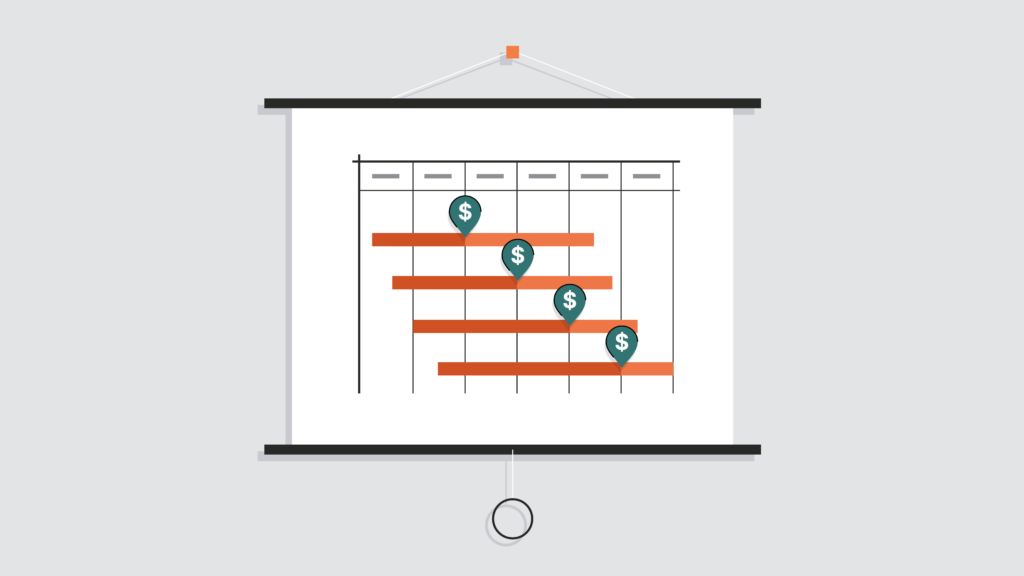
Guide to Progress Payments on Construction Projects
There are lots of ways to bill for work on a construction project. You can bill at the end of the project, at the beginning, or as you go along....
